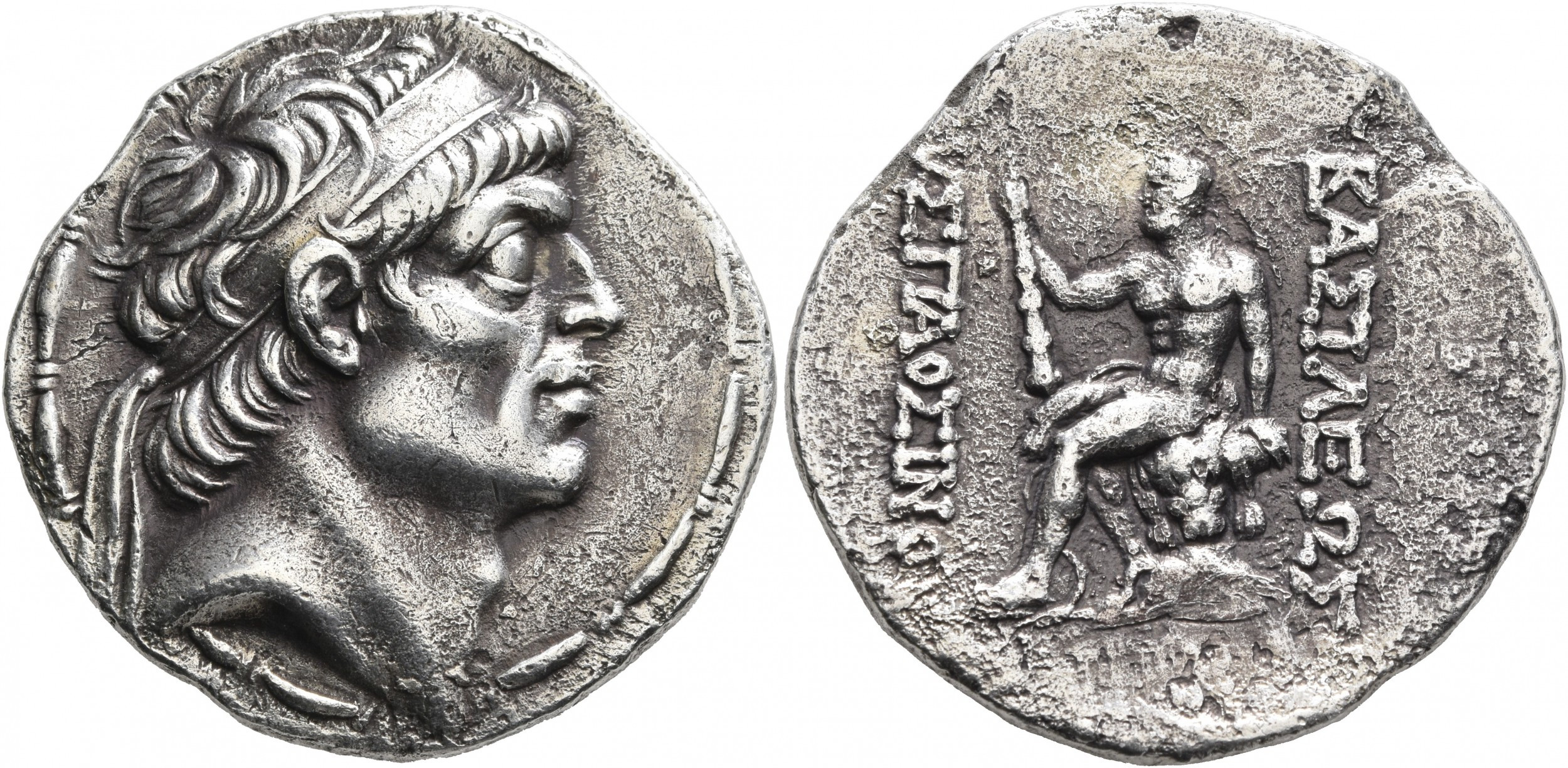127 BCE - 126 BCE | ΒΑΣΙΛΕΩΕ ΑPΣΑΚΟΥ
|
|
Sale(s)Sale(s) ᵖ:
|
Triton IV, 05 Dec. 2000, n°326 = Gemini, II, 11 Jan. 2006, n°150
|
|
|
|
Description
| ObverseInscription or printing placed on the obverse.:
|
Diademed head of king right
|
ReverseInscription or printing placed on the reverse.:
|
ΒΑΣΙΛΕΩΕ ΑPΣΑΚΟΥ (Greek) Tyche seated left on backless throne with winged tritoness support, extended right hand holding Nike who crowns her, left hand cradling cornucopia.
|
Mint and issuing power
Chronology
| FromIdentifies the initial date in a range assigned in a numismatic context. 127 BCE toIdentifies the final date in a range assigned in a numismatic context.. 126 BCE
|
Hellenistic 323-30 BC  periodTime period of the numismatic object. periodTime period of the numismatic object.
|
Physical description
MetalThe physical material (usually metal) from which an object is made.: Silver 
|
WeightWeight of the numismatic object (in grams). in grams: 15.3915.39 g <br />15,390 mg <br />
|
DenominationTerm indicating the value of a numismatic object. Examples: tetradrachm, chalkous, denarius.: tetradrachm 
|
|
|
|
|
References
Description
| ObverseInscription or printing placed on the obverse.:
|
Diademed head of Hyspaosines to right
|
ReverseInscription or printing placed on the reverse.:
|
ΒΑΣΙΛΕΩΣ ΥΣΠΑΟΣΙΝΟΥ (Greek) Herakles seated left, holding club set on his knee with his right hand and leaning left on rock draped with lion skin
|
Mint and issuing power
Chronology
| FromIdentifies the initial date in a range assigned in a numismatic context. 129 BCE toIdentifies the final date in a range assigned in a numismatic context.. 128 BCE
|
Hellenistic 323-30 BC  periodTime period of the numismatic object. periodTime period of the numismatic object.
|
Physical description
References

